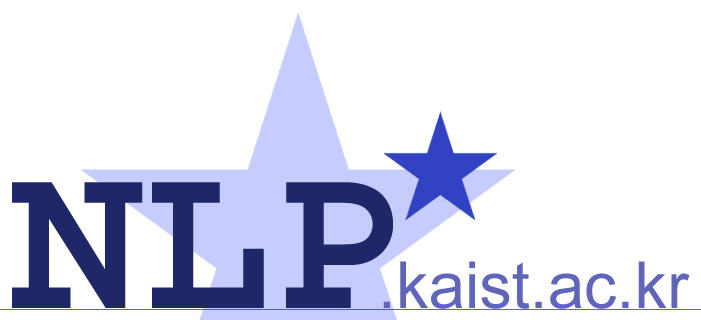Recent Publications
Publications The latest 10 papers published or under reviewDoes Rationale Quality Matter? Enhancing Mental Disorder Detection via Selective Reasoning Distillation
Hoyun Song, Huije Lee, Jisu Shin, Sukmin Cho, Changgeon Ko, and Jong C. Park
Findings of The 63rd Annual Meeting of the Association for Computational Linguistics: ACL 2025, July 27-Aug 1, 2025
(accepted)
Findings of The 63rd Annual Meeting of the Association for Computational Linguistics: ACL 2025, July 27-Aug 1, 2025
(accepted)
EXIT: Context-Aware Extractive Compression for Enhancing Retrieval-Augmented Generation
Taeho Hwang, Sukmin Cho, Soyeong Jeong, Hoyun Song, SeungYoon Han, and Jong C. Park
Findings of The 63rd Annual Meeting of the Association for Computational Linguistics: ACL 2025, July 27-Aug 1, 2025
(accepted)
Findings of The 63rd Annual Meeting of the Association for Computational Linguistics: ACL 2025, July 27-Aug 1, 2025
(accepted)
An Efficient Sign Language Translation Using Spatial Configuration and Motion Dynamics with LLMs
Eui Jun Hwang, Sukmin Cho, Junmyeong Lee, and Jong C. Park
Proceedings of the 2025 Conference of the North American Chapter of the Association for Computational Linguistics: Human Language Technologies, Apr 29-May 4, 2025
Proceedings of the 2025 Conference of the North American Chapter of the Association for Computational Linguistics: Human Language Technologies, Apr 29-May 4, 2025
Lossless Acceleration of Large Language Models with Hierarchical Drafting based on Temporal Locality in Speculative Decoding
Sukmin Cho, SJ Choi, Taeho Hwang, Jeongyeon Seo, Soyeong Jeong, Huije Lee, Hoyun Song, Jong C. Park, and YJ Kwon
Findings of the Association for Computational Linguistics: NAACL 2025, Apr 29-May 4, 2025
Findings of the Association for Computational Linguistics: NAACL 2025, Apr 29-May 4, 2025
Retrieval-Augmented Generation through Zero-shot Sentence-Level Passage Refinement using LLMs
Taeho Hwang, Soyeong Jeong, Sukmin Cho, and Jong C. Park
Journal of KIISE, 54(3), March, 2025. (To appear)
Journal of KIISE, 54(3), March, 2025. (To appear)
A Spatio-Temporal Representation Learning as an Alternative to Traditional Glosses in Sign Language Translation and Production
Eui Jun Hwang, Sukmin Cho, Huije Lee, Youngwoo Yoon, and Jong C. Park
2025 IEEE/CVF Winter Conference on Applications of Computer Vision (WACV 2025), Feb 28-Mar 4, 2025
2025 IEEE/CVF Winter Conference on Applications of Computer Vision (WACV 2025), Feb 28-Mar 4, 2025
Political Bias in Large Language Models and its Implications on Downstream Tasks
Jeong yeon Seo, Sukmin Cho, and Jong C. Park
Journal of KIISE, 52(1), 18-28, January, 2025.
Journal of KIISE, 52(1), 18-28, January, 2025.
The Impact of Retrieved Document Bias on Generated Responses in RAG: An Analysis through Political Bias Experiments
Seungho Cho, Changgeon Ko, Taeho Hwang, Jeong yeon Seo, and Jong C. Park
Korea Software Congress (KSC2024), Dec 18-20, 2024.
(selected as the best paper)
Korea Software Congress (KSC2024), Dec 18-20, 2024.
(selected as the best paper)
Improving Keypoint-based Korean Sign Language Translation Performance Through Frame-wise Contrastive Learning
Hyeyeon Kim, Junmyeong Lee, Eui Jun Hwang, and Jong C. Park
Korea Software Congress (KSC2024), Dec 18-20, 2024.
(selected as the best paper)
Korea Software Congress (KSC2024), Dec 18-20, 2024.
(selected as the best paper)
Different Bias Under Different Criteria: Assessing Bias in LLMs with a Fact-Based Approach
Changgeon Ko, Jisu Shin, Hoyun Song, Jeong yeon Seo, and Jong C. Park
The workshop on Socially Responsible Language Modelling Research at NeurIPS 2024 (SoLaR@NeurIPS 2024), Dec 14, 2024.
The workshop on Socially Responsible Language Modelling Research at NeurIPS 2024 (SoLaR@NeurIPS 2024), Dec 14, 2024.
